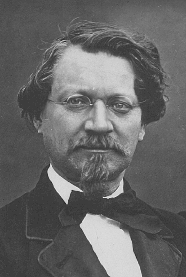- Dissolve 36g of sodium hydroxide in 160 cm3 of water
contained in a 500 cm3 conical flask, and chill the stirred
solution to 0-5oC in iced water.
|
- Why does the solution need to be chilled?
- The dissolution of sodium hydroxide is strongly exothermic; the
liquid must not be hot since addition of bromine in the next step would
be hazardous; it is very volatile and the reaction is exothermic.
|
- Add 10.8 cm3 of bromine slowly to the stirred solution;
during the addition the temperature rises slightly, and should be
reduced again to 0-5oC.
|
- Why is bromine added slowly?
- The reaction is exothermic, and thermal runaway must be avoided.
|
- Add a solution of 12 g of ethanamide in 20 cm3 of water,
in small portions, to the stirred bromate(I) solution so that the
temperature of the mixture does not rise above 20oC. Then
remove the flask from the ice-water, and allow to stand at room
temperature for 30 minutes.
|
- Why is the ethanamide added slowly in small portions?
- The reaction is exothermic.
|
- Set up a distillation apparatus using a distilling flask of 500 cm3
capacity. Arrange for the outlet of the condenser to join via a short
length of rubber tubing to an inverted funnel. The latter is arranged so
that the rim is just below the surface of 100 cm3
of a solution of 2.5 mol dm-3 hydrochloric acid
contained in a 250 cm3 beaker.
|
- What is the function of the inverted funnel?
- Aminomethane is very soluble in HCl; without the funnel the acid
might suck back into the distillation apparatus. If suck-back does occur
with the funnel, then the liquid drops below the rim and allows air in
to equalise the pressure.
|
- Transfer the reaction mixture to the distilling flask, add a few
anti-bumping granules, and support the flask over a gauze. Heat the
mixture cautiously so that the temperature rises slowly. When
brisk effervescence occurs, remove the heat until the reaction subsides.
Aminomethane is evolved and is absorbed by the hydrochloric acid
solution. Continue to distil so that aminomethane is evolved smoothly
and none escapes absorbtion by the hydrochloric acid. The distillation
may be considered complete after 30 minutes.
|
- What is the function of anti-bumping granules?
- They provide nuclei on which gas bubbles can grow, leading to smooth
boiling rather than bumping which can be hazardous.
|
- Concentrate the solution of the amine chloride by distilling it
until about 30 cm3 of liquid remains in the distilling flask.
Transfer this residue to an evaporating basin, and evaporate to dryness
over a boiling water bath.
|
- Why is a boiling water bath used rather than direct heating with
a flame?
- The hydrochloride salt would decompose if heated too strongly,
giving fumes of aminomethane and HCl which then recombine in the cool
air as a white smoke.
|
- Immediately break up the solid (a mixture of aminomethane
hydrochloride and ammonium chloride) and transfer it to a 150 cm3
round-bottomed flask fitted with a reflux condenser. Add about 60-70 cm3
of absolute (i.e. completely water-free) ethanol and boil the mixture
for 5 minutes. Pour the hot liquid through a fluted filter paper into a
conical flask. Repeat the extraction with a further 20 cm3 of
absolute ethanol and combine this with the previous extract. Cool the
solution, and filter off the colourless crystals of the product.
Transfer these rapidly to a desiccator.
|
- Why must the ethanol be free from water?
- Ammonium chloride is not soluble in absolute ethanol, but is fairly
soluble in the usual laboratory reagent which contains some 5% of water.
- Why is a fluted paper used?
- The filtration is faster through a fluted paper.
- Why is the product transferred rapidly to a desiccator?
- The product is deliquescent and forms a solution rapidly with
atmospheric moisture.
|

